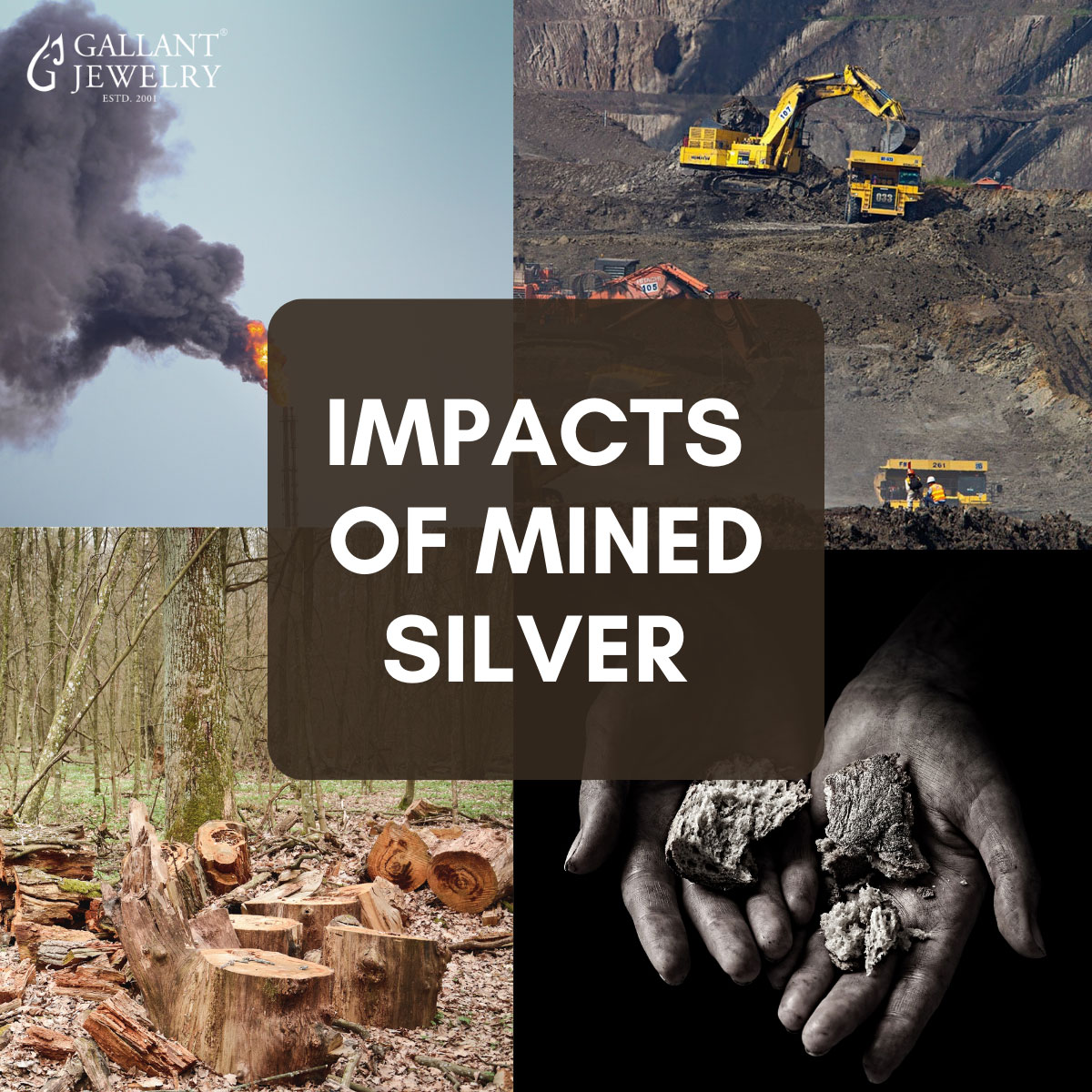You might have come across the term Recycled silver in association with sustainable jewelry manufacturing.
We generally make jewelry with metals like silver, gold & platinum which are usually mined from the earth. And, we might not know, but the mining of these metals has contributed to drastic changes in the environment and mining community at large.
Air pollution, deforestation, water pollution and huge emission of greenhouse gases are only a few of the negative impacts of mining.
We as a consumers, manufacturers & designers are getting more conscious and responsible for our environment. And, recycling silver instead of mining it has been a game-changer for the jewelry industry.
There have been several jewelry brands like Monica Vinader, Kimai, that have used recycled silver and have reduced their carbon footprint at least by 5% and emit 40,000 tons fewer carbon emissions in a year.
But do you know what the environmental and social impacts of mined silver are?
Mining of silver has expanded considerably in the recent decades to meet the ever-rising demand of silver jewelry.
The three main processes of metal extraction and consumption are mining, processing, and disposal. And, these steps cause a hazardous impact on our environment.

Mining: Mining of silver causes environmental disruption since heavy machinery creates enormous open pits. It also requires land clearing. Countless trees have been chopped and destroyed to make room throughout the years.
This leads to deforestation, contamination of water & impacting the surrounding ecosystem. Due to deforestation, several natural habitats have been destroyed, putting both the animal and plant life in grave danger.
Metal mining consumes a massive amount of electricity and energy. The continual smelting and processing procedures emit harmful greenhouse gases.
Processing: The silver ore is further refined. This step has considerable impact on air quality, water and alters the ecosystem balance. Acid runoff from the mining process can be damaging for the animal, plant, and human life. It can also have a hazardous impact on the air. Toxic pollutants contaminate the air we breathe and the water we drink. There have been lot of landslides as a result of mining.
Disposal: The waste silver left during the manufacturing stage is disposed off which also leads to air and water pollution.
Therefore when we compare mined silver and recycled silver, the latter wins the race by a huge margin. Recycling silver can reduce harmful emissions that contribute to global warming by 300 to 500 million tonnes.
Silver recycling is significantly less harmful in terms of CO2 emissions and pollution, as well as consuming significantly less energy. Recycled silver, like all recycled metals, can help save plants, animals, and ecosystems while also lowering CO2 emissions, toxic waste, and energy use.
It is high time to re-think the way we craft our jewelry. And, in our journey towards sustainable & responsible jewelry manufacturing, recycling silver and gold is a crucial step.
The waste silver from jewelry manufacturing is melted and recycled to use it again. We at Gallant Jewelry recycle our surplus, faulty items, rejected samples & waste silver for 50,000 pieces of jewelry.
We also source recycled silver only from our trusted and certified suppliers in India and USA, if our clients need over 50,000 pieces of recycled silver jewelry.
Let’s begin this journey of making responsible and sustainable choices by using recycled silver for crafting fine jewelry.